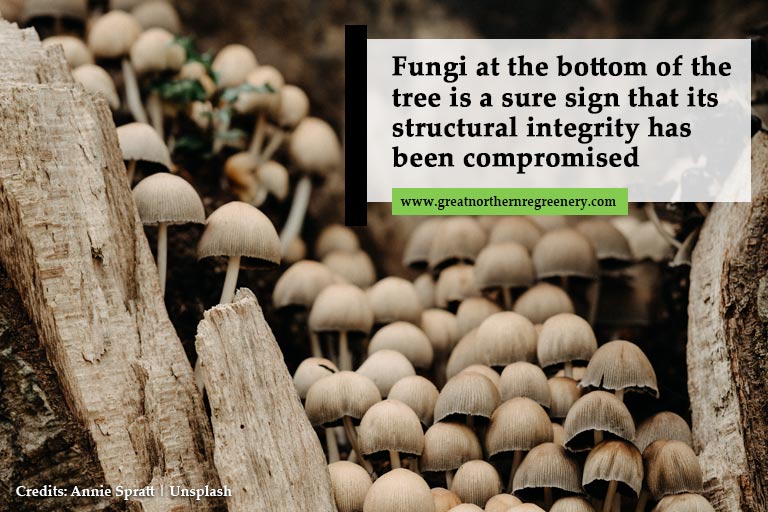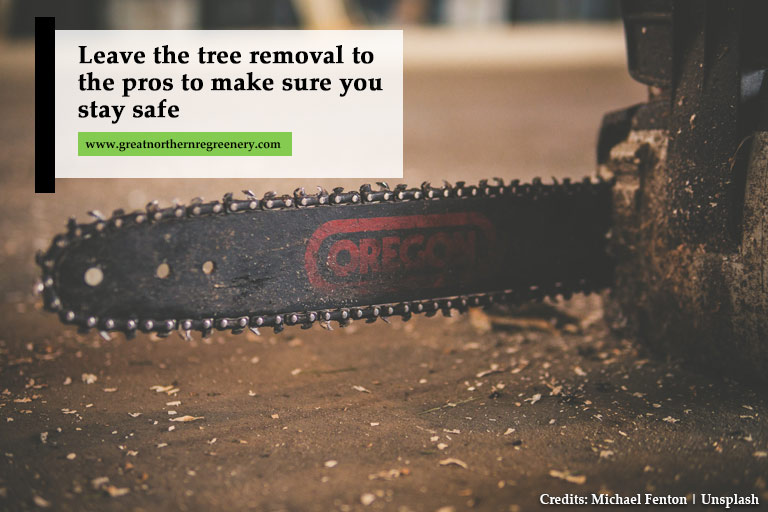No backyard is truly complete without a great, tall tree that gives shade, privacy, and a thick branch for a swing for your children to play on. There are numerous tree species that come in a variety of shapes and sizes.
Some shed their leaves, while others remain green all year, yet they all share one trait: they are living organisms. Living organisms, like all other things on this lovely globe, live and die, and trees are no exception.
No matter how much you adore that ancient oak tree in your backyard or how many memories you have associated with it, you may have to cut it down at some point. How can you tell when the time is right? Let’s find out together.
1. Root problems
When you see a darkening of the leaves, thinning of the treetop, or even tree leaves falling when they shouldn’t, it’s a good indication that your tree needs to be removed. If you see any of these signs, it’s possible that the root system is decaying.
The tree’s root system is what keeps it alive. It absorbs all of the water and nutrients it needs, and if it is unable to do so, the plant will die. Fortunately, if you catch these issues early enough, there may still be time to address them. You’ll need to speak with an arborist because only they can assess the severity of the situation and advise you on what to do next.
2. When the tree is leaning
Unless your tree has grown a little off to the side, leaning can indicate internal problems. Those who have developed in this manner are not dangerous; those who have been absolutely straight for much of their lives and suddenly began tilting to the side are.
Experts now believe that there is a simple way to detect whether or not a leaning tree is safe. In general, if the leaning inclination is less than 10 degrees, the tree is safe. If the leaning angle is greater than 10 degrees, you should contact an arborist to assess the tree and decide if it poses a threat to you or your property.
3. Compromised structural integrity
Structural integrity sounds like something an architect would say about a tall building, yet trees, like tall buildings, require structural integrity in order to develop and stay upright. However, unless you cut into it, you won’t be able to know if it’s structurally sound. You can, on the other hand, do a sound test to establish whether or not a tree is in good condition.
When the structural integrity of the trunk is compromised, the tree trunk is hollow in several areas. To some extent, you can test this by tapping it with a hammer or an axe and listening for a hollow sound. This sound should be quite easy to detect, and if you do, it’s probably time to remove the tree because it’s no longer in good shape. Again, don’t rush; there might still be time, and a chainsaw isn’t your only alternative. Contact an arborist and proceed from there. If they decide that tree removal is the best option, you already know what to do.
4. Fungi and disease

Examining the tree’s base is another tried and tested method of determining its health. There should be nothing strange down there if you’re looking at a healthy specimen. Mushrooms growing at the base of the tree, on the other hand, are usually an indication that the root system is dead and the tree has become a huge meal for fungi. The tree can still be salvaged if you notice it early, but if it’s mushroom-city down there, it’s time to remove it.
5. If the tree has recently taken severe damage
There’s no denying that trees are strong and resilient. They aren’t, however, all-powerful. They can and do take a hammering, but in some cases, they simply take more than they can bear.
Strong winds can inflict major damage to the trunk and canopy in some circumstances. They have the ability to shred and snap branches, and in certain cases, even break the trunks in half. It’s advisable to remove the tree if it has sustained that much harm. A tree’s ability to regenerate is compromised if it loses more than a third of its branches.
6. Your tree is in the wrong location
Unfortunately, you may be obliged to cut down a perfectly healthy tree just because it is in the way. They can get too close to electricity lines or our homes, and you’re obliged to remove them. Treetops that reach over the roof may pose a danger. A tree branch could snap and damage your home or even injure a family member. In these cases, it’s preferable to simply remove it and replace it with a new one.
7. If the tree is bothering you
The tree doesn’t need to be diseased or pests-infested. Sometimes, you may need to remove a tree just because it’s in the way. Perhaps you’re planning to construct a building in the area, or the tree has just grown too huge and is now encroaching on your roof, obstructing sunlight and posing a threat to your property. If this is the case, you can simply contact a professional tree removal service and have it taken care of.
There are numerous reasons to cut down a tree. Whatever the case may be, keep in mind that you should never attempt to remove a tree by yourself. There’s a lot more to this than just merely hacking into the trunk with a chainsaw. Hire specialists to remove a tree if you need it removed.
Contact the Tree Removal Professionals

Removing trees is an inherently dangerous task. The bigger your tree is, the bigger the challenges there are. It simply isn’t a do-it-yourself task.
To make sure that your tree removal process is safe and stress free, contact Great Northern Regreenery at 1-877-775-7444.





